How to Ensure Circuit Protection, High Speed Data, and Power Conversion for eMobility Platforms
Contributed By DigiKey's North American Editors
2021-09-21
The need for reliable circuit protection, high-speed communications, and compact power conversion solutions in eMobility and transportation systems is growing across a range of platforms including hybrid and electric cars, buses, medium and heavy-duty on and off-highway vehicles, and marine platforms. These trends are being driven by increasing emphasis on sustainability and safety as the transportation industry transitions to more autonomous control and electric vehicles (EVs) or hybrid EVs (HEVs). As a result, new vehicle systems are emerging that are progressively becoming more dependent on safe and sustainable vehicle operation.
To ensure safety and reliability, designers of connected, electric, and automated vehicles need a wide variety of circuit protection, along with communications and power conversion solutions that are designed for reliable operation in challenging environments, and are certified to meet AEC-Q200, SAE, USCAR, and other performance standards.
This article briefly reviews some of the specifications of circuit protection devices that designers need to consider. It then introduces specific circuit protection, connectivity, and power conversion solutions from Bel Fuse and examines the use of those products in eMobility systems.
EV protection components and standards
To meet the challenges around EVs, designers can turn to an array of automotive qualified and certified circuit protection, high-speed communications, and power conversion solutions including:
- Automotive qualified fuses in cartridge, pc board mounted (through hole and surface mount), and offset bolt configurations optimized for power systems and subsystems, plus fuses for auxiliary applications and accessories such as driver-assist radar systems, brake pump motors, portable chargers, battery systems, infotainment, cameras, programmable lighting, and power-assisted steering. In addition, specific applications will require high inrush, fast-acting, slow blow, and resettable polymeric positive temperature coefficient (PPTC) fusing.
- AEC-Q200 qualified electromagnetic interference (EMI) suppression chokes to filter out noise and protect high-speed data signals for the numerous sensor subsystems that make up ADAS and navigation systems, multimedia systems, vehicle-to-everything (V2X) clusters, and antennas, and provide differential noise suppression for automotive Ethernet, Controller Area Network (CAN) bus, FlexRay, and automotive Universal Serial Bus (USB)
- Fully shielded RJ45 connectors that comply with the Society of Automotive Engineers (SAE) USCAR2-6 “Performance Specification for Automotive Electrical Connector System – Revision 6”, and enable designers to replace CAN buses with faster and lighter weight automotive Ethernet to support growing in-vehicle computing needs in a range of ADAS systems such as driver-assist cameras and radar-based driver assist systems, as well as telematics, media converters, and gateways.
- IP67 certified power converters, including electric and hybrid vehicle battery chargers that are automotive qualified and are offered in convection or liquid-cooled implementations with galvanic isolation.
Selecting circuit protection devices
When selecting an appropriate device, a clear understanding of its operating characteristics is important when specifying circuit protection devices for eMobility systems. Some basic specifications include:
- Voltage rating: the maximum permissible voltage for safe operation
- Current rating: the current in amperes (A) that the fuse can carry under normal operating conditions
- Breaking capacity (also called interrupting rating or short circuit rating): the maximum current the fuse can interrupt at its rated voltage without being damaged; breaking capacity must meet or exceed the maximum fault current anticipated for the circuit
- Time current curves: define whether the fuse is fast-acting or slow blow (also called delayed acting); fast-acting fuses are used where speed of protection is critical; slow-blow fuses are used in applications that experience a short-term current surge or overload
I2t: A specification without a test standard
A specification that deserves special attention is the nominal melting rating, I2t (pronounced “I squared T”). This is a measure of the energy required to melt the fuse element, an important fuse characteristic for any application. I2t is expressed as “Ampere squared seconds” (A2sec). Unfortunately for designers, neither the UL/CSA 248 or IEC127 standards for miniature and micro fuses include a test procedure or testing criteria for I2t. The industry standard definition of I2t is:
MELTING I2t measured at 10In, using constant direct current (DC), where ln is the rated current of the fuse.
The use of 10In can be problematic and does not always result in accurate opening times. Slow-blow fuses, in particular, may require a higher multiple than 10 times the nominal current rating to arrive at the true I2t value. Since different manufacturers deal with this dilemma differently, it is important for designers to have a clear understanding of the method used to arrive at the I2t values for specific fuses. A more detailed discussion of these challenges is available here: I2t explained.
Fast-acting and slow-blow chip fuses
Designers of automotive navigation systems, lithium-ion (Li-ion) battery management systems (BMS), LED headlamps, automotive power over Ethernet (PoE), PoE+, and liquid crystal displays (LCDs) can benefit from using surface mount chip fuses based on thick film technology, such as the 0685P series of fast-acting fuses. The 0685P series features high inrush current withstand capability. These AEC-Q200 compliant and UL approved 1206 size fuses are available with current ratings from 2 A to 50 A, and voltage (volt) ratings of 50 volts alternating current (AC) and 63 volts DC. The model 0685P3000-01 is rated for 6 A with an I2t rating of 1.3 A2sec at 10In.
For designers needing slow-blow fusing, Bel offers the C1T series of 1206 size chip fuses (Figure 1). These are available with current capacities from 750 milliamperes (mA) to 8 A and are rated for 63 volts AC or DC. The model 0685T6000-01 is rated for 6.0 A with an I2t rating of 6.0 A2sec at 10In. The C1T series slow-blow fuses are UL, CSA and CE approved, and carry the TUV certification to IEC 60127 for miniature fuses.
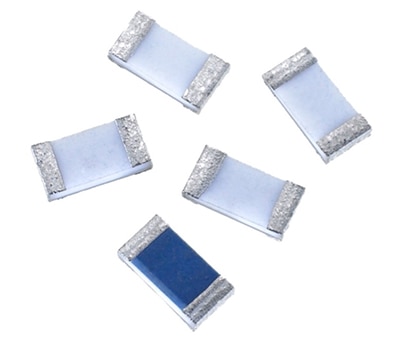 Figure 1: Chip fuses like the slow-blow C1T series are used in a variety of automotive applications where a compact form factor is important. (Image source: Bel Fuse)
Figure 1: Chip fuses like the slow-blow C1T series are used in a variety of automotive applications where a compact form factor is important. (Image source: Bel Fuse)
Resettable PPTC devices
Designs that can benefit from resettable circuit protection with very low operating resistance and very high hold current can use PPTC devices. PPTCs can be especially useful in applications such as motor and motor circuit protection in power door locks, mirrors, seats, sunroofs, and windows, as well as heating ventilation and air conditioning (HVAC) systems and electronic control unit (ECU) I/O protection.
Bel offers two families for PPTC devices. Both are AEC-Q compliant, TUV certified to EN/IEC 60738-1-1 and EN/IEC 60730-1, and UL recognized to UL1434:
- 0ZRS radial leaded PPTCs are rated from 500 mA to 10 A with a maximum voltage of 32 VDC, and typical power ratings from 0.9 to 7.0 W (Figure 2). For example, the 0ZRS0100FF1E has a trip current of 1.9 A, a hold current of 1.0 A and is rated for 1.4 W.
- 0ZCG surface mount PPTCs are rated from 100 mA to 3 A with maximum voltages from 6 to 60 volts DC, and typical power ratings from 0.8 to 1.3 W. The 0ZCG0110BF2B device from this family is rated for 24 volts DC, and has a hold current of 1.1 A, a trip current of 2.2 A, and a power rating of 1 W.
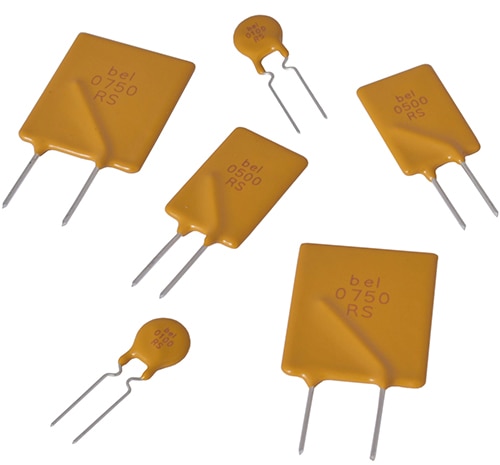 Figure 2: The OZRS radial-leaded PPTCs are rated for 32 volts DC and up to 10 A. (Image source: Bel Fuse)
Figure 2: The OZRS radial-leaded PPTCs are rated for 32 volts DC and up to 10 A. (Image source: Bel Fuse)
In-rush current withstand fusing
The 0680L series of square style 2410 package size surface mount ceramic fuses have high in-rush current withstand capability (Table 1). These slow-blow fuses are designed for applications that require high DC interrupting ratings and high DC voltage ratings. They are rated up to 125 volts DC or AC and offer current ratings from 375 mA to 12 A. The 0680L fuses are AEC-Q compliant.
|
|||||||||||||||||
Table 1: Electrical characteristics of the 0680L series surface mount slow-blow fuses. (Image source: Bel Fuse)
These slow-blow fuses are often used for PoE, PoE+, power supply, and battery charging circuit protection; the 0680L3000-05 is rated for 3 A and 0.81 W with an I2t rating of 13 A2sec at 10In.
Fast-acting EV power fuses
Designers can turn to fast-acting fuses in cartridge and bolt-down configurations for protecting high-power batteries and EV power converters. These fuses are in full compliance with EU Directive 2011/65/EU and amending directive 2015/863. They are designed to meet UL 248-1 as well as the reliability requirements of JASO D622 and ISO8820-8. Typical applications include:
- Main system fusing
- Charging stations
- Energy storage and battery packs
- Power distribution units
- On-board DC-to-DC converters
- Brake pump motors
- Air conditioning compressor motors
- Electric steering systems
They can handle currents up to 600 A and have voltage ratings from 500 to 1,000 volts DC; the 0ADAC0600-BE is a good example of a cartridge type fuse rated for 600 mA and 600 VDC or VAC, with an I2t rating of 0.073 A2sec at 10In.
EV time lag fuses
The 0697W series of sub-miniature, radial lead, time-lag fuses have ratings of 350 volts AC or 72 volts DC, a current rating of 1 A to 6 A, and comply with IEC 60127-3 (Figure 3). These fuses are compliant with AEC-Q quality and Mil-Std 202G environmental standards.
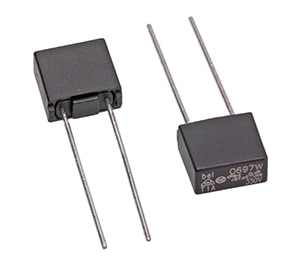 Figure 3: The 0697W series are AEC-Q compliant, radial lead, high voltage, time-lag fuses. (Image source: Bel Fuse)
Figure 3: The 0697W series are AEC-Q compliant, radial lead, high voltage, time-lag fuses. (Image source: Bel Fuse)
Applications for the 0697W devices include ECUs, motors, climate and ventilation controls, plugs and cigarette lighter accessories, power outlets, and wire harnesses. For example, the 0697W2000-02 is rated for 2 A and 0.63 W with an I2t rating of 30 A2sec at 10In.
Common-mode chokes for high-speed communications
Designers of automotive infotainment, multimedia, and ADAS systems using an Ethernet, CAN bus, FlexRay, or USB communications bus can turn to Signal Transformer’s SPDL series of AEC-Q200 certified ultra-compact common-mode chokes for suppression of differential mode noise (Figure 4). These compact surface-mount device (SMD) chokes are offered in four metric sizes, 2012, 3216, 3225, and 4532, and 26 different component ratings. The SPDL series have a rated current range from 150 to 400 mA and an impedance range from 90 to 2200 ohms (Ω). The model SPDL3225-101-2P-T is rated for 150 mA and 2200 Ω with an inductance of 100 microhenries (µH).
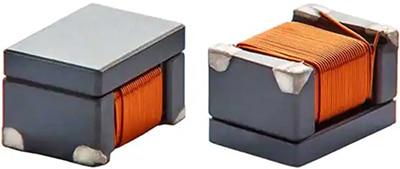 Figure 4: The SPDL series of ultra-compact SMD common mode chokes can be used with Ethernet, CAN bus, FlexRay, or USB communications interfaces. (Image source: Signal Transformer)
Figure 4: The SPDL series of ultra-compact SMD common mode chokes can be used with Ethernet, CAN bus, FlexRay, or USB communications interfaces. (Image source: Signal Transformer)
Upgrade to Ethernet
Due to its faster data rate and lighter weight cable, designers are replacing CAN bus with Ethernet in a growing number of eMobility applications. The Bel Fuse MagJack automotive Ethernet single-port integrated connector modules (ICMs) have the Ethernet magnetics solution integrated into the connector package. This results in a more compact solution and simplifies the task of upgrading existing CAN bus systems with Ethernet signaling and cabling styles (Figure 5). MagJack Ethernet ICMs operate up to 100°C and are SAE/USCAR2-6-compatible. These ICMs are approved by Broadcom, Intel, and Marvell, and are compatible with standard automotive grade transceivers, further simplifying the switch to Ethernet.
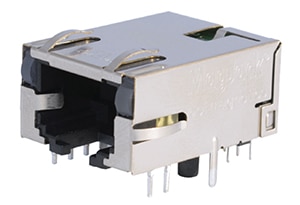 Figure 5: The MagJack automotive Ethernet single-port ICMs feature integrated magnetics to meet the need for compact solutions. (Image source: Bel Fuse)
Figure 5: The MagJack automotive Ethernet single-port ICMs feature integrated magnetics to meet the need for compact solutions. (Image source: Bel Fuse)
An example is the A829-1J1T-KM automotive Ethernet ICM that meets all IEEE 802.3 10/100Base-T electrical requirements.
Power conversion for HEVs and EVs
Bel Power Solutions offers designers a complete range of power conversion options for eMobility including DC-DC converters, bidirectional DC-DC converters, on-board chargers, auxiliary inverters, and inverter charger systems that integrate a bidirectional inverter charger with two DC-DC down converters. For example, the 22 kilowatt (kW) BCL25-700-8 is a liquid-cooled, on-board battery charger for HEVs and EVs on medium and heavy-duty platforms for on and off-highway operation (Figure 6). Features and specifications of the BCL25-700-8 include:
- Single-phase (190 to 264 volts AC) or three-phase (330 to 528 volts AC) input
- Can connect to AC grid power or to an Electric Vehicle Supply Equipment (EVSE) charging station (EV Std. IEC 61851-1)
- Constant output current of 60 A over a voltage range from 250 to 800 volts DC
- Up to four units can be placed in parallel
- IP67 and IP6K9K compliant
- IEC 61851-21-1 and ECE R10.6 certifications
- SAE J1772 & CAN interface SAE J1939 compliant
- Active high-voltage DC interlock monitoring
- Operates from -40 to 60°C at full load
- Over temperature, overcurrent, and output overvoltage protections
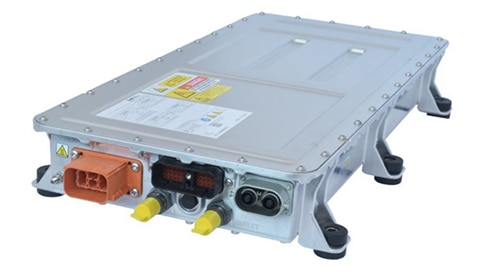 Figure 6: The BCL25-700-8 is a 22 kW, on-board, liquid-cooled battery charger for HEVs and EVs that are intended for medium to heavy-duty applications, for both on and off-highway. (Image source: Bel Fuse)
Figure 6: The BCL25-700-8 is a 22 kW, on-board, liquid-cooled battery charger for HEVs and EVs that are intended for medium to heavy-duty applications, for both on and off-highway. (Image source: Bel Fuse)
Conclusion
A wide variety of circuit protection, communications, and power conversion solutions will be needed to support the safety and sustainability requirements of the next generation of connected, electric, and increasingly automated vehicles. As shown, designers have ready access to solutions in the form of automotive qualified circuit protection devices, EMI suppression chokes that comply with AEC-Q200, fully shielded RJ45 Ethernet connectors that comply with SAE/USCAR2-6, and IP67 certified power converters. These will help HEV and EV designers meet the many current and emerging design challenges as autonomous designs evolve.
Recommended reading

Disclaimer: The opinions, beliefs, and viewpoints expressed by the various authors and/or forum participants on this website do not necessarily reflect the opinions, beliefs, and viewpoints of DigiKey or official policies of DigiKey.










